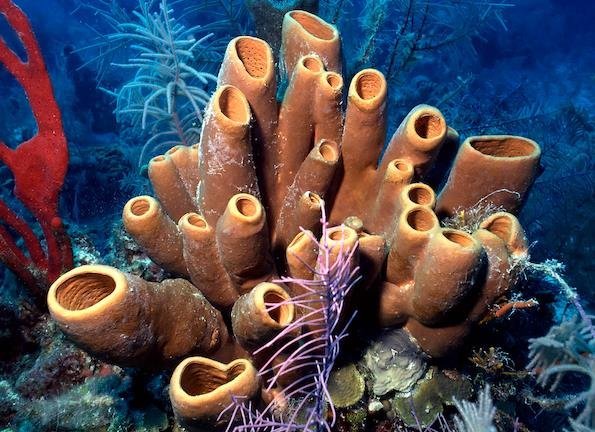A new study has found that sea sponges can capture and store DNA fragments from the fish that live around them, providing a novel way to study the biodiversity of the deep-sea ecosystems.
Sponges as natural DNA samplers
Sea sponges are simple animals that live attached to the seafloor, filtering water through their porous tissues to obtain nutrients and oxygen. They also expel waste and other substances, including fragments of DNA from other organisms that pass through their pores.

A team of environmental and marine biologists from Liverpool John Moores University and the Natural History Museum, both in the U.K., decided to investigate whether this DNA could be used to identify the fish species that live in the vicinity of the sponges. They collected 64 specimens of three different sponge species (Geodia barretti, Geodia hentscheli and Phakellia ventilabrum) from various locations in the North Atlantic Ocean, ranging from Svalbard to Western Greenland.
They extracted and sequenced the DNA from the sponge tissues and compared it with reference databases of fish DNA. They found that they could detect DNA from 31 different fish families, representing 42% of the known fish diversity in the region. Some of the fish species were rare or endangered, such as the Greenland shark (Somniosus microcephalus) and the Atlantic wolffish (Anarhichas lupus).
A record of local biodiversity
The researchers also found that the DNA in the sponges reflected the characteristics of the local fish communities, such as their geographic location, depth and level of protection. For example, they could distinguish between fish assemblages from different regions based on the presence or absence of certain indicator species, such as the Arctic cod (Boreogadus saida) and the Atlantic cod (Gadus morhua).
They also found that sponges from deeper waters contained more DNA from benthic fish (those that live on or near the bottom) than those from shallower waters, which contained more DNA from pelagic fish (those that live in the open water). Moreover, they found that sponges from protected areas contained more DNA from large-bodied fish than those from unprotected areas, suggesting a lower fishing pressure.
A cost-effective method for marine conservation
The authors of the study suggest that sea sponges could be used as a cost-effective and non-invasive method for monitoring the diversity and health of deep-sea fish communities, which are often difficult to access and study by conventional means. They also propose that sponges could be used to track changes in fish populations over time, as they can retain DNA for several years.
They hope that their findings will inspire further research on the potential of sea sponges as natural DNA samplers and contribute to the conservation of marine biodiversity in a changing world.
